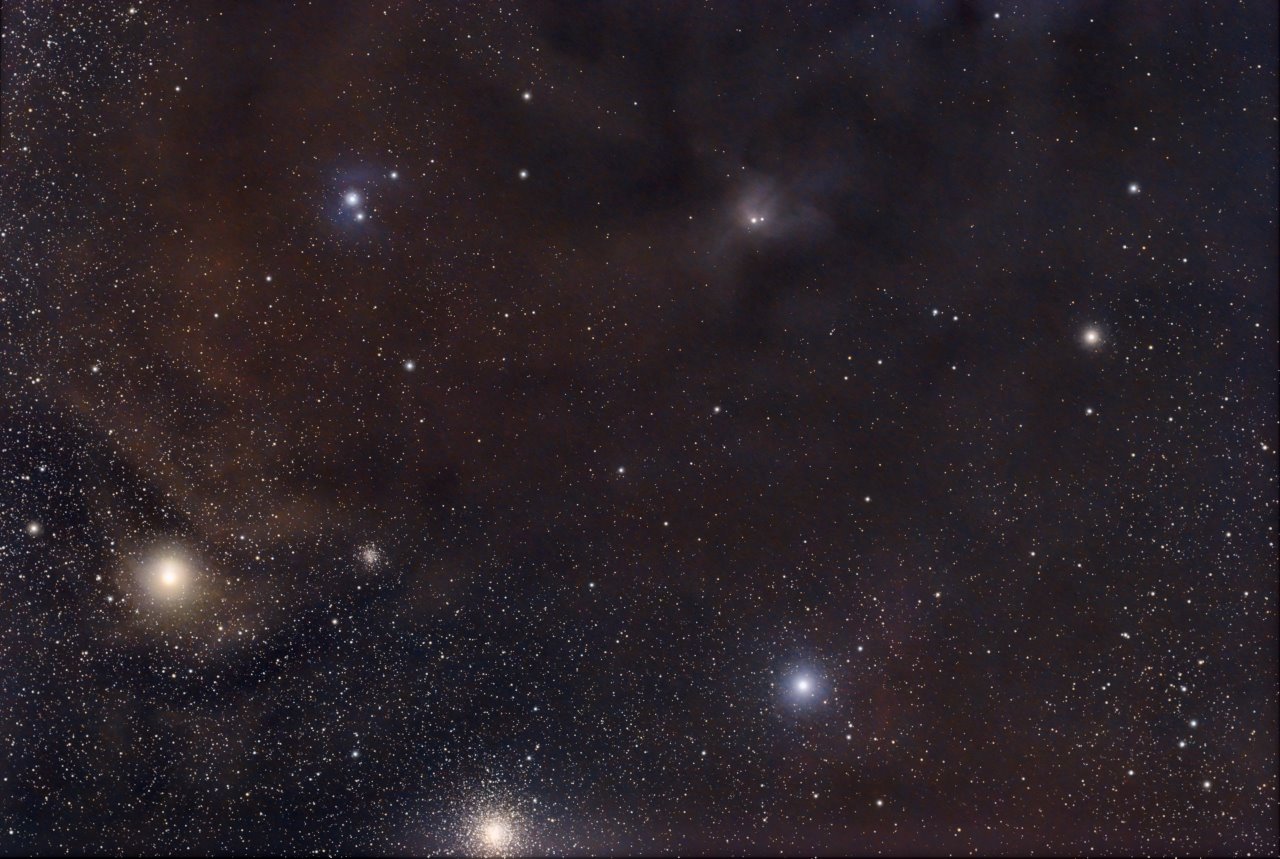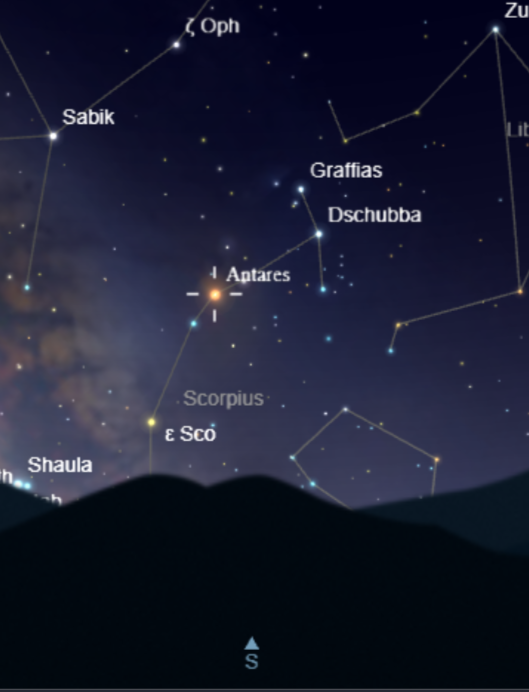Antares-M4 region
Belleville, MI
06/21/25
The Antares–M4 Region – A Radiant Tangle of Stars, Dust, and Color in Scorpius
Best seen directly South in July during the early evening hours of summer, the Antares–M4 region, located in the heart of the constellation Scorpius, is a visually stunning area of the sky that combines bright stars, colorful nebulae, and dark interstellar dust clouds. Anchored by the red supergiant Antares and the globular cluster Messier 4 (M4)—and joined by a second, lesser-known globular cluster, NGC 6144—this region presents a rich contrast between cool and hot stars, and between glowing emission and shadowy absorption features. It’s one of the few places where such a dramatic and colorful interaction of celestial structures is visible even in broadband images.
Location, Distance, and Composition
- Location: Constellation Scorpius, near the celestial equator
- Antares Distance: ~550 light-years
- M4 Distance: ~7,200 light-years
- NGC 6144 Distance: ~8,900 light-years
- Region Size: The nebulosity and dark dust span several degrees of sky, roughly 25–30 light-years across in physical extent
Though Antares, M4, and NGC 6144 appear close together in the sky, they lie at vastly different distances—Antares is embedded in nearby interstellar material, while both globular clusters reside in the galactic halo, far beyond the foreground dust and gas.
Antares – A Red Supergiant
Antares (α Scorpii) is the dominant star in the region—a red supergiant nearing the end of its life.
- Spectral Type: M1.5 Iab
- Surface Temperature: ~3,500 K
- Luminosity: ~75,000 times that of the Sun
- Diameter: ~700 times the diameter of the Sun (if placed at the center of the Solar System, it would extend beyond Mars)
- Color: Distinctly red-orange, easily visible to the naked eye
- Antares is also part of a binary system, with a faint blue companion (B2.5V type), providing a striking color contrast when resolved through a telescope
Antares illuminates nearby interstellar material, creating a yellow-orange reflection nebula (IC 4606)—a rare color caused by the relatively cool temperature of the illuminating star.
The Nebulae and Dust Complex
The region lies at the southern edge of the vast Rho Ophiuchi molecular cloud complex, one of the nearest star-forming regions to Earth. It contains:
- Reflection Nebulae (e.g., IC 4606, IC 4605): Reflecting light from Antares and nearby B-type stars
- Dark Nebulae: Dense dust clouds like LDN 1689, which obscure background starlight and add dramatic contrast
- Emission Nebulae: Faint, reddish Hα emissions from ionized hydrogen, energized by nearby young stars
The interplay between colored starlight, cool dust, and ionized gas gives this region some of the richest natural colors in astrophotography, particularly when imaged in true color under dark skies.
The Globular Clusters: M4 and NGC 6144
Messier 4 (M4)
- Distance: ~7,200 light-years
- Size: ~75 light-years across
- Apparent Magnitude: ~5.6, easily visible in binoculars
- Star Population: Hundreds of thousands of ancient stars, over 12 billion years old
- One of the closest and best-resolved globular clusters in the sky, appearing bright and well-separated in moderate telescopes
NGC 6144
- Distance: ~8,900 light-years
- Apparent Magnitude: ~9.0, fainter and more compact than M4
- Located just a degree northeast of Antares, often overlooked due to obscuring dust and Antares’ glare
- Despite being physically near M4 in the sky, NGC 6144 lies over 1,500 light-years farther and is partially obscured by the same dark clouds that make this region visually rich
These two ancient clusters, set against the complex foreground of gas and dust, offer a striking juxtaposition of galactic history—globular clusters representing the early formation of the Milky Way, and nearby nebulae linked to ongoing star formation.
Project Details
-
Belleville, MI
-
ZWO ff65 telescope f=416mm, Pentax K3ii, 4 minute subs, iso320, 2h41m integration time



